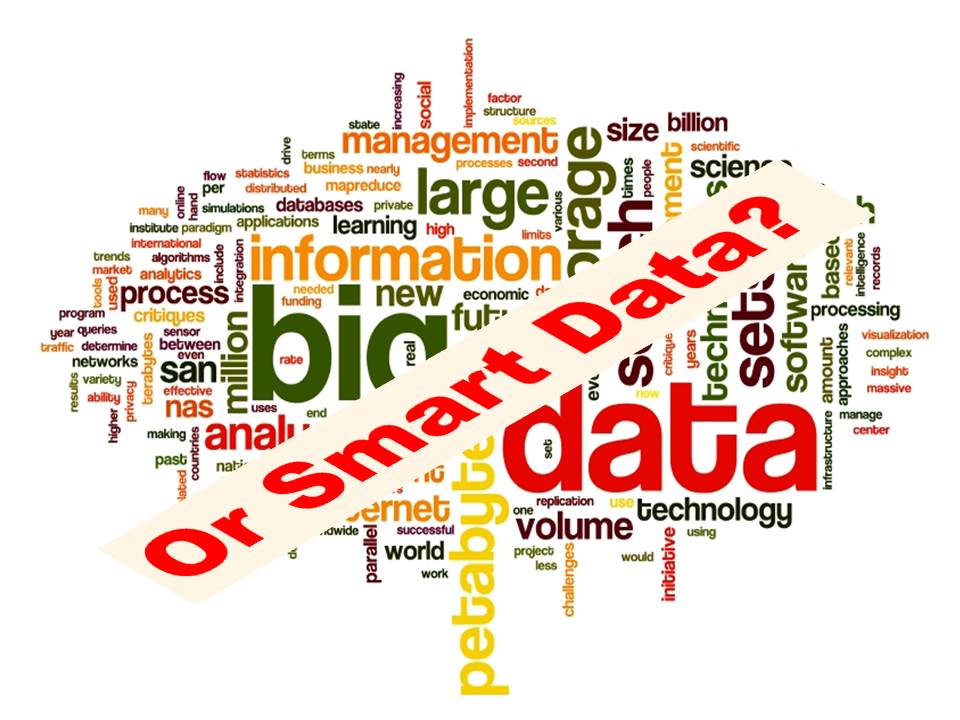 A new European payday lender with the name Creamfinance has coined a new term called Smart Data that is supposed to outperform Big Data. In our opinion it is analytics which makes good use of Big Data, in essence filtering out what is useful for decision making and what is not. We wonder whether Creamfinance’s opinion pans out with the Fintech industry adopting the new term Smart Data. The following is an article which we found in Tech.Co:
A new European payday lender with the name Creamfinance has coined a new term called Smart Data that is supposed to outperform Big Data. In our opinion it is analytics which makes good use of Big Data, in essence filtering out what is useful for decision making and what is not. We wonder whether Creamfinance’s opinion pans out with the Fintech industry adopting the new term Smart Data. The following is an article which we found in Tech.Co:
“With advances in machine learning and IoT, tech companies, consumers, and retailers are all abuzz about the benefits of big data. Copious amounts of information, that were previously unreachable, are changing the way everyone does business.
Financial markets, on the other hand, are catching on to a new trend in tech that is making big data look like yesterday’s news. While big data has given finance companies access to valuable information, it has also created a sea of information that has little to no value, and sifting through it all drains time and efficiency.
The new wave in information theory and management for the fintech industry is called smart data. Instead of mining infinite data sets that may not provide any value, smart data focuses on key pieces of information that institutions have determined to be valuable.
Why Smart Data?
The author recently spoke with Patrick Koeck, chief operating officer at Creamfinance, Europe’s top fintech company and a leading firm in smart data, who shared his insights into the usefulness of the new information procuring procss.
“Smart data cuts through the noise and finds data that provides real value to the firm, allowing executives to focus on vital information instead of wasting time on extraneous or distracting data,” says Koeck. “This kind of laser focus has the potential to reshape the way the industry does business.”
Koeck explains that these types of ‘quality over quantity’ analytics are driving innovation in Fintech like never before. Where big data used to drown traditional banks with meaningless information about loan applicants and their financial history, smart data now identifies patterns and trends in that data that allows lenders to quickly look at key metrics for determining whether someone can pay back a loan.
“We have found that by zeroing in on information we’ve determined to be value added. We’re able to reduce risk and make faster lending decisions, giving us access to more clients and increased profits.”
The Big Data Divide
Big data is not new in the fintech world, in fact it has been around for years. But as firms mature in their efforts, they find a need to improve the usability of the information at their disposal. By cutting out irrelevant information, they are able to focus on information that reduces risk and identifies the possibility of positive returns.
Koeck and other smart data experts are not saying that big data has not been a valuable tool for the financial industry. It does however, create a sort of paralysis towards decision-making that reduces revenue.
“That’s why we started Creamfinance. When loans were taking too long to come through we agreed there had to be a better way,” Koeck says.
Consumers are also benefiting from the fintech industry’s new approach to data. Because financial companies are making smarter, faster decisions, more consumers have access to important services than ever before.
The Data Balancing Act
By the same token, smart data does not neglect the wealth of information that big data makes available either. For example, at Creamfinance, the ability to leverage smart data to make predictions means reducing the potential risk. By only lending to those who are ‘predicted’ to return the funds.
The growing influence of the IoT and data-driven business applications are sure to bolster the value of smart data. Soon enough these quality analytics will expand to new markets, especially fintech.
“Smart data is an evolution of big data that is geared toward helping solve business problems. Information that doesn’t directly help the firm make a decision is set aside for later use. While helpful data is aggregated to help the firm make fast and sensible lending decisions,” explains Koeck.
Overall, fintech is leaning toward this kind of innovation. Improving overall operations and evolve the ways in which data can be leveraged. Because while quantity goes a long way, quality makes more sense in the long run.”
Author: Sheila Eugenio
About: Creamfinance makes consumer finance quick-to-access by using the most advanced and representative scoring techniques. This minimizes consumer effort and maximizes risk management. Utilizing advanced algorithms and machine-learning capabilities to quickly evaluate and score, we make money available anytime, everywhere.
Aiming to make borrowing money online as simple as clicking one click, Creamfinance is working towards increasing automation to become one-click loans provider to consumers globally.obally.
Creamfinance Statistics: Average loan: €209.50 Average loan age: 28 days
Monthly lending volume by end of 2015: €7,500,000
First time loans approved: 31% – Consecutive loans approved: 88%
Creamfinance is headquartered in Warsaw, Poland
Source: Tech.Co





















